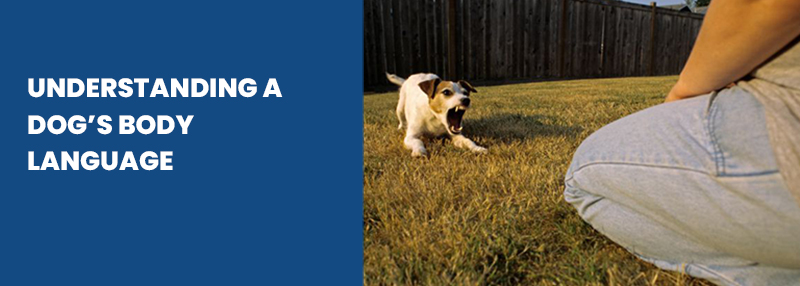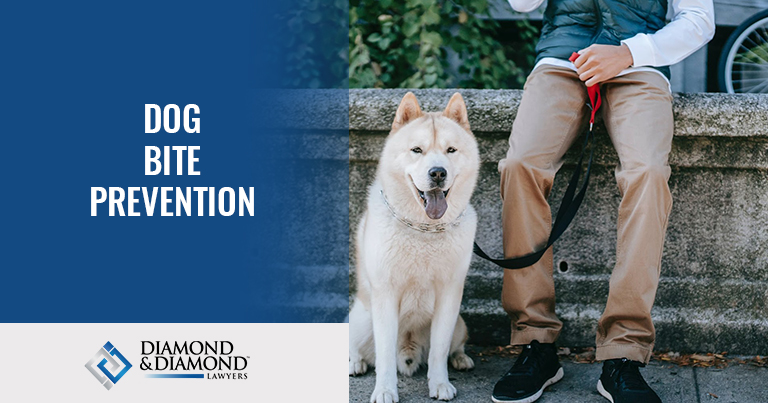Playing with your dog is an essential role in the lives of most families. The majority of dogs are loyal and loving friends. When provoked, however, all dogs, regardless of breed, age or size, may try to bite you.
Children and adults should be taught about dog bite prevention, while dog owners should practise responsible dog ownership to decrease the number of injuries that may be caused. Understanding what dogs are attempting to say via their body language and behaviour is just one of many measures pet owners can take to help prevent dog attacks.
Here are a few dog bite prevention techniques that everyone should be aware of.
Safety Guidelines for Adults and Children Around Dogs
Although there’s no way to ensure that a dog won’t bite someone, several techniques significantly decrease the danger. Dogs respond differently in varying situations based on their breed, so always use caution, especially among canines with which you’re unfamiliar. It’s critical to be mindful of circumstances that might terrify or even endanger a dog.
Here are some pointers on how to behave near dogs so that you don’t get bitten:
- If a dog is eating, sleeping or caring for puppies, don’t interrupt them.
- Approach a dog’s food, toys or dish with caution.
- Teasing, chasing or yelling at a dog is a bad idea.
- Playing rough with dogs or grabbing their ears and tails isn’t recommended.
- Be mindful that elderly dogs, as well as those with impairments, are more easily annoyed or scared. Therefore, always be respectful of these pets.
- Don’t take a dog’s food or pick up fallen food in the presence of a dog.
- Running or riding a bicycle past a dog isn’t a good idea. Some dogs like chasing objects that move quickly, such as skateboards.
- Avoid crowding, cornering or standing over a dog since this may cause them to become defensive.
- Approaching unsupervised pets in yards, automobiles or outside stores isn’t a good idea.
- Learn how to read a dog’s body language.
Understanding a Dog’s Body Language
 To prevent getting bitten by any dog, you must first learn to read their body language. You should be able to tell when your dog is nervous, scared, intimidated or aggressive based on the symptoms he or she exhibits. You’ll be far less likely to get bitten if you pay close attention to signals they might be sending.
To prevent getting bitten by any dog, you must first learn to read their body language. You should be able to tell when your dog is nervous, scared, intimidated or aggressive based on the symptoms he or she exhibits. You’ll be far less likely to get bitten if you pay close attention to signals they might be sending.
Most common signs of dog aggression:
- Upward and forward-positioned ears
- Back or tail fur that’s raised
- The tail is vertical and may wag quite fast
- Standing in a stiff, straight-legged position
- Staring without moving
- Barking, growling or lunging
Most common signs of dog fear or anxiety:
- Lip licking is done repeatedly
- Cowering and dropping of the head.
- Flattened ears and a tucked tail
- Yawning
- Eye contact is avoided at all costs.
- Staying completely still
- Snarling or growling
Know How To Protect Yourself From a Dog Attack
Dog bites will continue to happen, no matter how hard you try to avoid them. Even so, you can try your hardest to prevent them. It’s preferable to take action and defend yourself if you’re approached by an aggressive dog. Before attacking, an aggressive dog wants you to be stressed out, but staying calm and in control slows them down and throws them off. Prepare for the unexpected and empower yourself with several self-defence tactics.
Ways to protect yourself from a dog attack:
- Keep a tiny plastic water bottle or spray bottle on you at all times.
- If a dog approaches you, give them a firm order.
- Carry a cane or a walking staff.
- You should wear a whistle around your neck.
- If you think you’ll spot a dog on your stroll, bring goodies with you.
- Avoid going past residences where a dog that you’re afraid of dwells.
- If you see someone being attacked, do all you can to help.
- If a dog approaches you, remain silent, fold your arms inwards, and avoid eye contact if the dog becomes overeager or aggressive. The dog will lose interest shortly and move away.
- Curl up into a ball and lie motionless if a dog knocks you down. Arms and hands should be used to shield your face, neck, and ears.
|
Additional Tips To Treating a Dog Bite
|
|
Clean the wound
|
You should use a gentle soap: rinse the wound in warm water for roughly five to ten minutes.
|
|
Slow down the bleeding
|
You can use a paper towel or a clean piece of cloth for this.
|
|
Apply antibiotic cream
|
You can use an over-the-counter product: You can get it from your local pharmacy or convenience store if you don’t have it.
|
|
Look for signs of an infection
|
This includes swelling, redness, fever or increased pain.
|
|
Keep the wound bandaged and see your doctor
|
You should use a sterile bandage and change it often to keep the wound clean.
|
Pro Tip
Never bother a dog that is sleeping, eating, or caring for puppies. Dogs in these situations are more likely to respond aggressively, even with a person who is familiar to them.
– Company Owner
Recommendations for Dog Owners
Dog bite prevention in Canada is the responsibility of the dog’s owner. The Dog Owners’ Liability Act allows you to be prosecuted if your dog bites someone. This might result in a fine, limits on your dog’s freedom or possibly your dog’s death. Although you may not be able to prevent your dog from biting someone, you may significantly minimise the danger by following basic precautions.
Here are some ideas and suggestions for dog owners on how to keep their dogs from biting:
- Instill in youngsters the value of treating all animals with respect and teaching them how to behave safely around dogs.
- Ascertain that the youngsters are aware of the safety rules and that they follow them.
- When bringing a new dog into your home, keep a close eye on him and assist him in learning acceptable behaviour.
- Enroll in a dog training class to learn how to provide positive, appropriate advice to your dog. Always keep an eye on kids and dogs.
- Never leave a dog alone with a newborn or child under the age of ten.
- Socialise your dog because well-socialised canines are fun and dependable friends.
- Monitor older children who are with new dogs, whether they’re their own or those of friends or family until you’re certain the dog is child-friendly.
- Your dog should be spayed or neutered as soon as possible. Spaying or neutering healthy puppies as early as eight weeks of age is possible.
- Assume fundamental duties for animal care. As required by law, you must licence your dog and give regular veterinarian treatment, including rabies vaccines. Allowing your dog to go free isn’t a great idea.
Get In Touch With Animal and Dog Bite Lawyers in Alberta
Despite the fact that the large majority of dogs are friendly and harmless, people are still bitten and attacked by them. Have you been injured in Alberta as a result of an animal attack? If this is the case, you should contact an Alberta dog bite lawyer as soon as possible.
Dog bites in Alberta can range from minor injuries to more serious mauling incidents, along with an increased danger of infection. In the worst-case circumstances, they might result in lifelong damage or even death. Furthermore, the physical agony associated with a dog bite is sometimes compounded by the emotional consequences.
The elderly and youngsters, who are more prone to dog bite assaults, may remain afraid of dogs for a long time.
Call Today For A FREE Consultation at 1-800-567-HURT.

 To prevent getting bitten by any dog, you must first learn to read their body language. You should be able to tell when your dog is nervous, scared, intimidated or aggressive based on the symptoms he or she exhibits. You’ll be far less likely to get bitten if you pay close attention to signals they might be sending.
To prevent getting bitten by any dog, you must first learn to read their body language. You should be able to tell when your dog is nervous, scared, intimidated or aggressive based on the symptoms he or she exhibits. You’ll be far less likely to get bitten if you pay close attention to signals they might be sending.